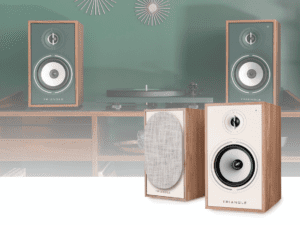
In one of the most public displays of the music business setting itself straight, Tidal’s recent announcement was part showbiz glitz, part hard-nosed business. Last month, Aspiro, parent company of high-resolution streaming service Tidal (and Tidal’s Scandinavian precursor, WiMP) was bought lock, stock, and two smoking channels for $56m by Project Panther Ltd, itself owned by rapper Shawn ‘Jay Z’ Carter. On March 30th, Jay Z, along with a consortium of 16 musician ‘owners of Tidal’ (including Beyoncé, Calvin Harris, Alicia Keys, Madonna, Coldplay’s Chris Martin, Kanye West, Jack White and Usher), very publically relaunched the service as “the first artist-owned global and music entertainment platform.”
The idea behind the service (from the musician’s perspective) is to claw back music’s value in the minds of the public, as opposed to free, advertising-supported services such as Spotify. Tidal’s new head honcho summed the situation up perfectly in a recent interview with Billboard magazine, “People really feel like music is free, but will pay $6 for water”. This revaluation of the music world comes by charging a two-tier subscription service, and passing a better cut of that subscription revenue on to the musicians themselves. Additionally, the 16 co-owners of Tidal each own around three per cent of the business. With artists like Taylor Swift (not one of the co-owners of Tidal) pulling her music from Spotify last year, and acts like AC/DC, the Black Keys and Thom Yorke of Radiohead refusing to stream on the service, musicians are actively trying to boost revenue from royalties across the musical world. This is entirely understandable.
From the listener’s perspective, Tidal has 25 million tracks in a variety of musical genre on offer, in a two-tier service. The $9.99/£9.99/9.99€ ‘Premium’ package offers music up to AAC 320kbps sound quality (in other words, akin to the sound offered by Apple’s iTunes service) while the $19.99/£19.99/19.99€ HiFi service delivers the same content in CD-equivalent lossless FLAC (1411kbps, at 16bit, 44.1kHz resolution). Mobile users can also set the service to ‘standard quality’ streaming at 96kbps AAC+, making music deliver easier when on the road. These services also include high-quality music videos, curated music content (I think in the old days, ‘curators’ used to be called ‘DJs’…), and potentially more as the service ‘scales’.

As it currently stands, the pay models mean all the iTunes quality music you can eat for the cost of one and a bit iTunes purchases a month, or CD quality streaming for about the cost of one and a half full-price CDs. And the quality of the HiFi service is good, well in line with the CD version of the same album ripped to Apple Lossless on iTunes. It’s certainly good enough for some listeners to have concluded Tidal spells the end of 30 years of CD buying. But this piece is not about the sound quality, because I’m not wholly convinced that’s enough anymore, and that is somewhat saddening.
This is a bold attempt for artists to try to make their life’s work have more than just artistic value again, and in terms of making good music sound good, Tidal achieves the goal perfectly. Unfortunately, it may be too late. Tidal’s target audience have already largely moved away from iTunes pay model to such an extent that Apple is expected to launch its rival Beats streaming service mid-year. For all the laudable talk of better royalties through Tidal, the public is not a ‘music buying public’ as much as it used to be and will find free ways of getting music, be that Spotify or YouTube. The hundreds of thousands of listeners discovering new music for free on Spotify could conceivably dwindle significantly if they have to pay for the service, and there’s a strong possibility Tidal will become a mainstream music streaming service, leaving the little guys out in the cold. Or worse, as artist and pundit Lily Allen pointed out on Twitter, exclusive Tidal contracts may mean, “people are going to swarm back to pirate sites in droves.” While her argument is worth noting, the fact remains there’s a need for artists to be paid for their art – not necessarily as handsomely paid as they were maybe 30 or 40 years ago, but neither should their art be essentially worthless, and Tidal does seem (at this point, at least) to offer the artist some form of recompense beyond the micro-royalties offered by rival services.
The cynical ‘make something worth paying for’ argument seems not to hold water any more, either. Some of the greatest music in history – from all genre – have been devalued in the process. If Carlos Kleiber conducting Beethoven’s Fifth Symphony and Louis Armstrong playing ‘West End Blues’ can be had for free, the rest of the musical canon is unlikely to get paid.
Opinion seems to be divided over Tidal’s service, however. Outside the audiophile world, the usual discussions abound about ‘overestimating the average listener’ and how most people will be unable to hear the difference between free streams and Tidal’s HiFi service. Still, this potentially gives the haters something new to get angry about, potentially leaving the high-resolution world alone for a while. Meanwhile, an increasing, er, stream of manufacturers are getting behind the service (most notably Linn Products, which has always been quick to take the digital temperature of the buying public – it was one of the first companies to abandon CD back in 2009). However, the audiophiles themselves, who should be the very ones most interested in a CD-quality streaming service, have yet to widely adopt it. Perhaps extending the trial period from seven to 30 days will help.
Tidal is one of those services the audiophile world should take note of, however. And that is about sound quality. We are not quite at the end of the CD era, but in the wider online world CD quality sound is already considered ‘astronomically high quality’ by some, and Tidal offers us a ‘use it or lose it’ chance to improve online streaming quality. In fairness, French rival Qobuz offers CD-quality and even 24-bit streaming, and has an excitingly quirky catalogue, but it currently lacks a presence outside of Europe. And it lacks the 25 million tracks. And Alicia Keys giving the keynote speech. However, European classical enthusiasts wanting a CD-quality streaming service tend to prefer Qobuz over Tidal, because it has a wider selection of recordings from more classical labels, and it has better notes on the music itself.
The big thing Tidal brings to the table now is visibility, however. The consortium of Tidal co-owners make the concept sound good to artists, and give the service more website space than almost all the rest of the audiophile world combined. If Qobuz breaks America tomorrow, or HDTracks announces it has all of 2014’s albums in downloadable high-resolution, it probably won’t make it to the pages of Forbes, USA Today, or The Guardian: Neil Young with Pono and now Jay Z with Tidal do make headlines. And Jay Z has the advantage of not looking quite so curmudgeonly as Neil Young…
Ultimately Tidal is a rare chance for sound quality to strike back, and strike back publically; driven by artists wanting better royalties, granted, but also driven by a need to be artists again, instead of contractual workers for the music business. And if those artists are rediscovering the joys of better quality sound, we should join them. I was one of the first audio reviewers to join the Spotify revolution, and now I feel it’s time to move onwards and upwards.
Tags: FEATURED
By Alan Sircom
More articles from this authorRead Next From Blog
See all
Audio Show Deluxe 2024: A photo show report
- Mar 28, 2024

Paul Messenger 1949-2024: A personal tribute
- Mar 26, 2024

Bristol Hi-Fi Show 2024: See You There!
- Feb 21, 2024

Triangle Borea Connect
- Feb 19, 2024










